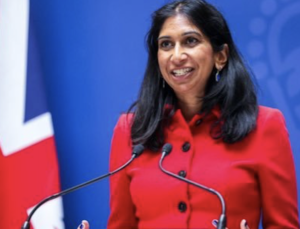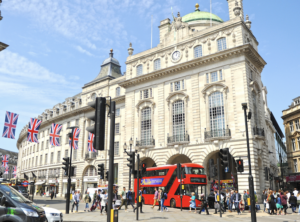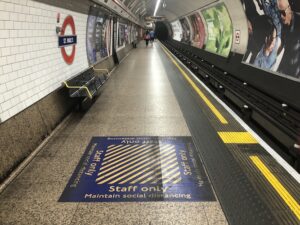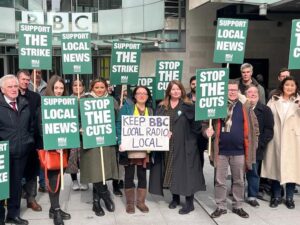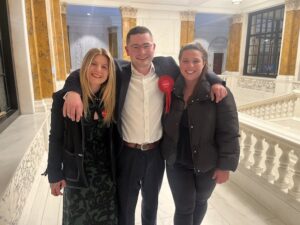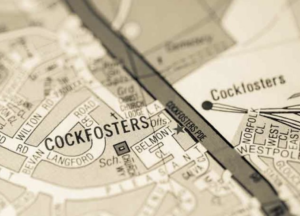There have been two by-elections in Camden since the May 2022 borough contests. The first came just two months later, caused by a surprised Labour winner quickly standing down. A Liberal Democrat picked up the seat. The second was yesterday in the South Hampstead ward at the other end of the long, straight drag of Fitzjohn’s Avenue and across Swiss Cottage junction. it came about after Labour’s Will Prince, first elected in 2022, resigned because his career was taking him to the United States.
The South Hampstead area was built up in the last quarter of the 19th Century. East of Priory Road, the land was owned by the Maryon Wilson family, whose legacy is better known in Woolwich because it the uncanny parks just west of the town centre which take its name. The plan for the suburb involved long, curved roads and large houses with gardens, the latter echoed in the “Gardens” street names. There were also a few mansion blocks in the mix.
Over the next century many of the houses were broken up into flats, and the streets are today densely populated with young professionals living in privately rented two-bedroom apartments. The area west of Priory Road up to West End Lane was built up in a more conventional style by the Cotton Estate, looking more to West Hampstead than Swiss Cottage.
Over in the east, on the slope between the Gardens and Swiss Cottage, there is some mid-century council housing, such as the 1950s Harben Road estate. The Jubilee line between West Hampstead and Swiss Cottage stations curves around the north and east, while South Hampstead station is served by the Overground in and out of Euston.
The area is not as exclusive as the town on the upper reaches of the hill – it lies on the other side of Finchley Road and has an NW6 postcode. But it is, even so, a desirable and expensive inner suburb with some of the celebrity and intellectual heft of Hampstead proper – it has been home to T.S. Eliot, Walter Sickert, Lindsay Anderson and the recently departed Barry Humphries.
In the inter-war period South Hampstead was part of the central European exile community known as Finchleystrasse, and there is still a Jewish flavour to the neighbourhood (8-9 per cent of the population, a bit less than on the NW3 side of the Strasse). The 2021 Census shows that South Hampstead is a hard-working, youthful and highly-educated ward. In the core of the ward, the Gardens streets, 73 per cent have degrees.
South Hampstead is the successor to the previous Swiss Cottage ward, which was a perennial marginal with a slightly perverse streak to it. Labour could win it when the party was doing well, but also lose there even when there was not a strong movement against the party, as in 1974, 1990 and in the case of one of the seats in 1998.
Counts have often gone down to the wire, with the third seat in the ward decided by very small numbers of votes: there were two-figure margins every time between 1986 and 1998. In good Conservative years Swiss Cottage was not even competitive, and the party hasn’t been an even halfway good one since 2010. Yet it took until 2018 for Labour to gain Swiss Cottage, and still by only 93 votes for the last seat.
The South Hampstead ward was created by the boundary changes for 2022. It differs from Swiss Cottage in not extending east of Finchley Road and by coming a bit closer to West Hampstead station. The changes were probably somewhat favourable to Labour, but not enough to change the basic alignment of the ward, which resembles the version of Swiss Cottage that existed between 1978 and 2002. Last year’s Labour win was its biggest in the area’s history, with the party securing 54 per cent of the vote, compared with the Conservatives’ 31 per cent and 14 per cent for the Lib Dems.
The electors of South Hampstead were offered high quality candidates for the by-election. Labour’s bid to hold the ward was led by Tommy Gale, who seems to be an energetic public advocate. He works as a social worker in Enfield, serves as vice chair of Enfield UNISON and in his spare time has founded an organisation called Inside Uni, which assists students from non-privileged background with putting their best foot forward when applying to Oxbridge. Gale also plays keyboards in a band called Fonn.
The Conservative was more qualified to use the “Local Conservative” flag of convenience on the ballot paper than most who have availed themselves of the option. Don Williams represented Swiss Cottage from 2002 until the Tories lost it in 2018. He was the first Camden councillor of Jamaican heritage and one of his successes came at the expense of your correspondent, who contested the ward in the Labour interest in 2010.
I remember delivering leaflets in the area and running into Williams having a cup of tea with his ward colleague Andrew Marshall at a café at the south end of Fairhazel Gardens, having done some of their own campaigning. I stopped for a chat in which I was professionally realistic about my chances of unseating either of them. Camden politics can be an amiable business.
Williams was certainly familiar to and with the electorate of South Hampstead, and probably the best candidate the party could have run. The Green party candidate was another experienced former Camden councillor, Lorna Jane Russell, who had previously represented the nearby Fortune Green for Labour. She defected to the Greens in 2021. Russell works in public affairs and strategic communications. The Lib Dem candidate Patrick Stillman is in the interesting field of financial crime compliance analysis.
The principal local issue was the planned redevelopment of the O2 Centre, a 1990s shopping centre and cinema which stands just outside the ward north of Finchley Road underground station. The O2 had never quite achieved the destination status originally intended and the large site, with a car park stretching most of the way over to West Hampstead, is not very efficiently used.
Labour councillors with the exception of the outgoing Will Prince, had supported the scheme but opposition parties objected on various grounds, such as density, loss of amenities and traffic (on the last point, residents can count themselves fortunate that an eight-lane motorway once planned to pass through this gap in the streetscape as part of the Ringway project was cancelled in the 1970s).
South Hampstead was the first election held in London where people had to produce photo ID before being allowed to vote at a polling station. It is as well to be cautious about the impact of this change until proper studies have been published. In the case of South Hampstead, its electorate is very likely to have an eligible document as only two per cent lack a passport.
Gale held the seat for Labour despite a big drop in the party’s vote share to 35 per cent. In taking on councillor duties as well as his other activities his victory seems a case of “if you want something done, ask a busy person”. His 882 votes put him 116 ahead of Williams, still a solid margin by historic Swiss Cottage standards. The Conservative share too dropped compared with last May, though albeit only slightly.
All the progress was made by the Lib Dems, who came a respectable third (531 votes, 21.5 per cent) and by the Greens (295 votes, 11.9 per cent) who did not contest the ward in 2022. Partly for that reason, the result was better than it looked for Labour. Turnout was 30.2 per cent, reasonable for a local by-election.
Twitter: Lewis Baston and On London.
On London and its writers need your backing. Give £5 a month or £50 a year and receive in return the weekly newsletter On London Extra and (at no additional charge) invitations to events featuring eminent Londoners. Pay using any of the “donate” buttons on the site, by becoming a paid subscriber to my Substack, or directly into the company bank account. Email davehillonlondon@gmail.com for details. Thanks. Dave Hill.


